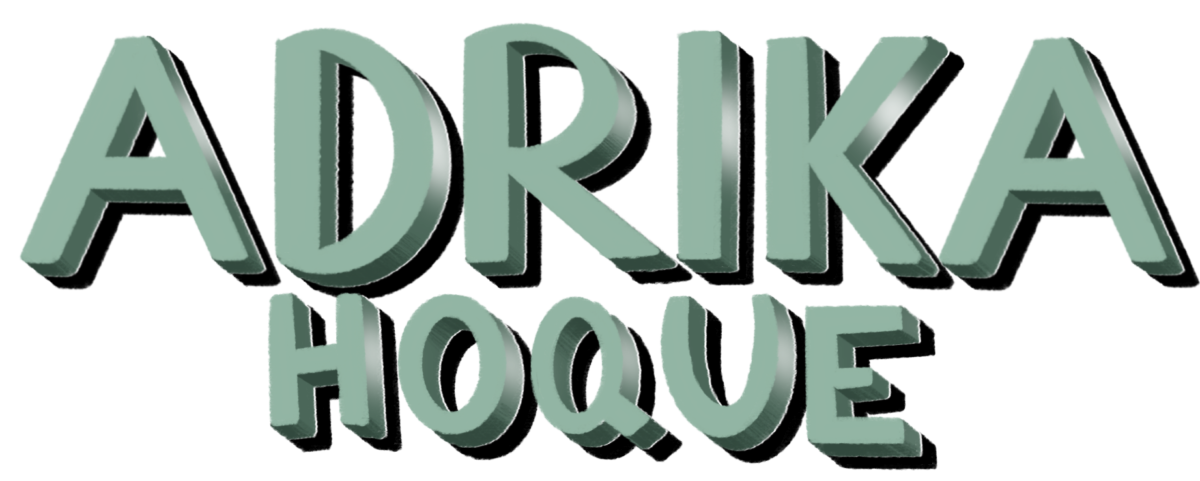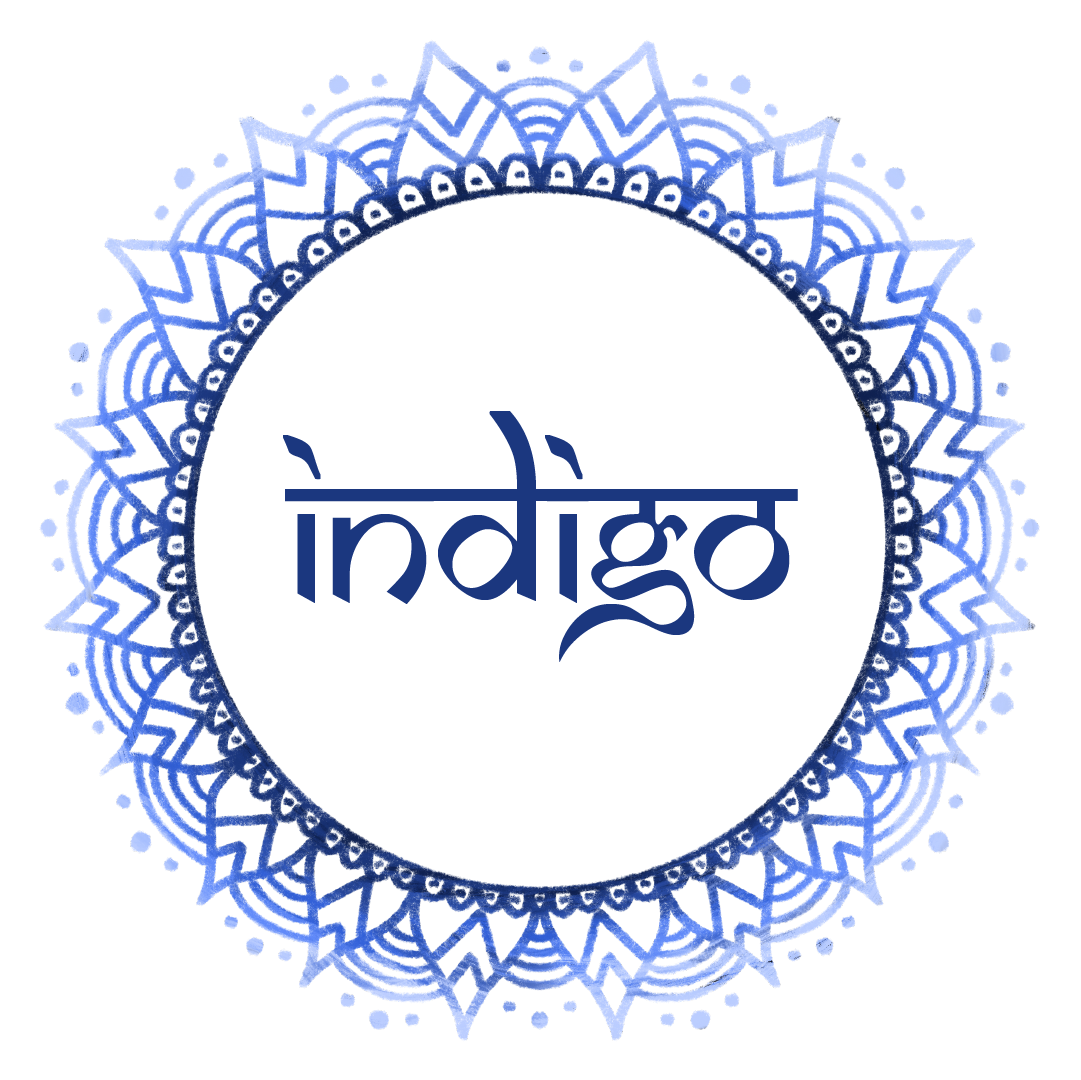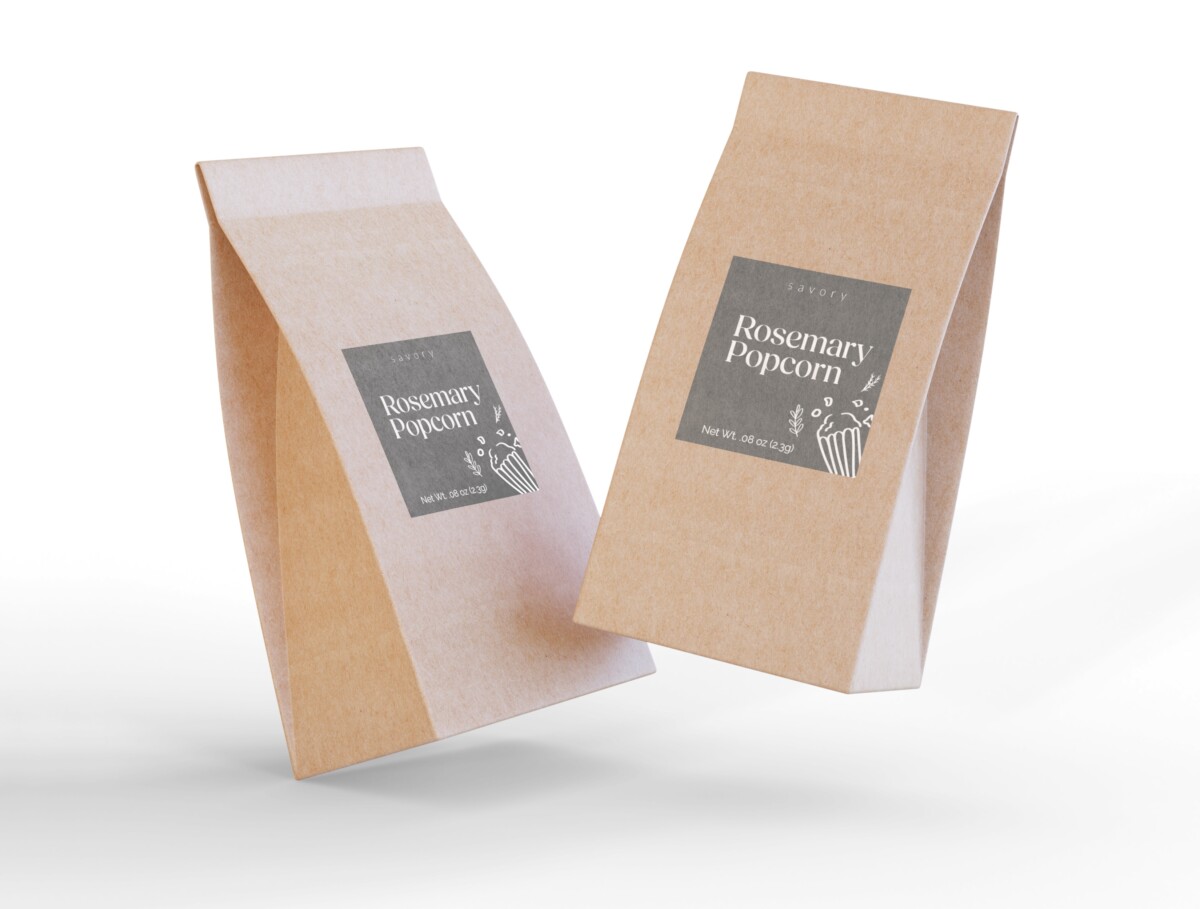Digital Media Foundations
Fall 2022
Prof: Devir Shriky
Research
Indigo is a plant originally cultivated in India and Bangladesh 5000 years ago to make blue pigment and dyes. The etymology of the word is Greek “indikos” meaning “Indian dye” and the Indian and Bangla word for Indigo is “neel”. It is most used to dye clothing blue such as jeans but was also used to create artworks and dye hair in the same manner as henna. Indigo was highly sought out and imported mainly by Europeans as it could not grow in the European climate. The leaves of the plant must be soaked, fermented, and oxidized and pressed into hard cakes that can then be turned grinded down into pigments. It was thought to be a color of the elite due to its rarity.
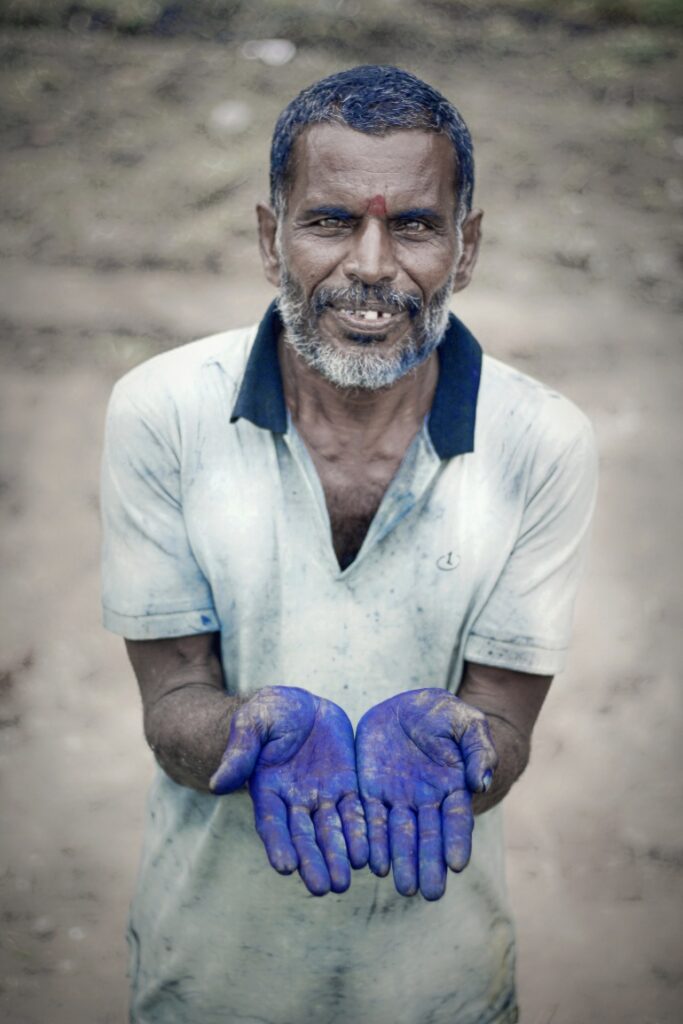


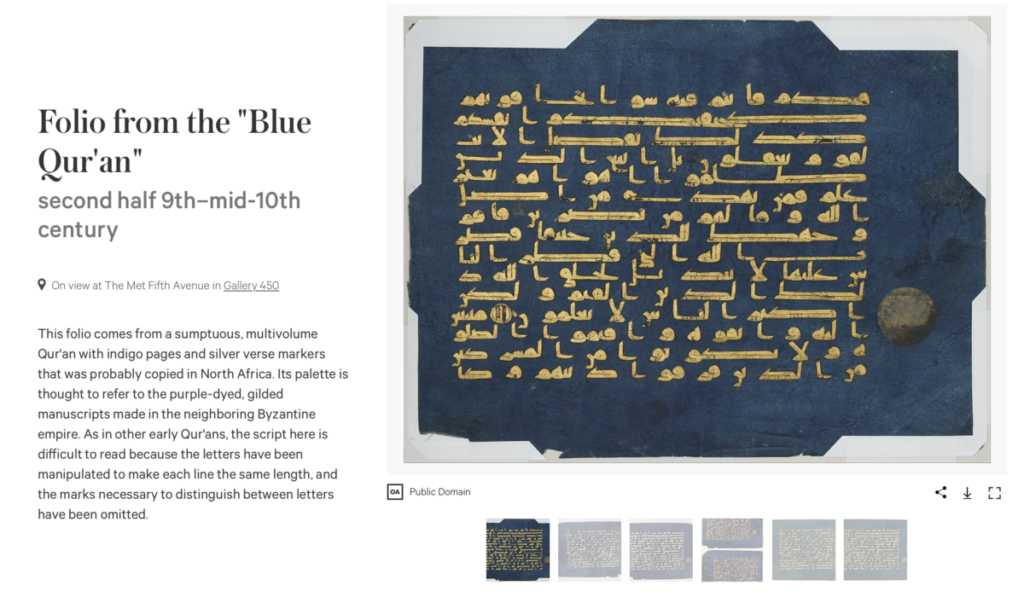

The Sketches
After researching the etymology of the word indigo, I decided to go for concepts that focused on the Indian origins and organic plant elements. I really liked the idea of indigo being the “blue gold” of India due to the rarity and prosperity it brought and so I wanted to visually represent that through my compositions. Organic fluid shapes, natural elements, and an airy and light atmosphere were all used to show that.
The typefaces chosen all had smooth curved edges and a thick brush pen feel. I wanted to keep a hand drawn aesthetic in mind for all the concepts and nothing too perfect or geometric. Drawing inspiration from the pigment dye aspect of indigo, I mimicked Indian textile patterns in the sketches. Henna was also used as inspiration for the pattern making.
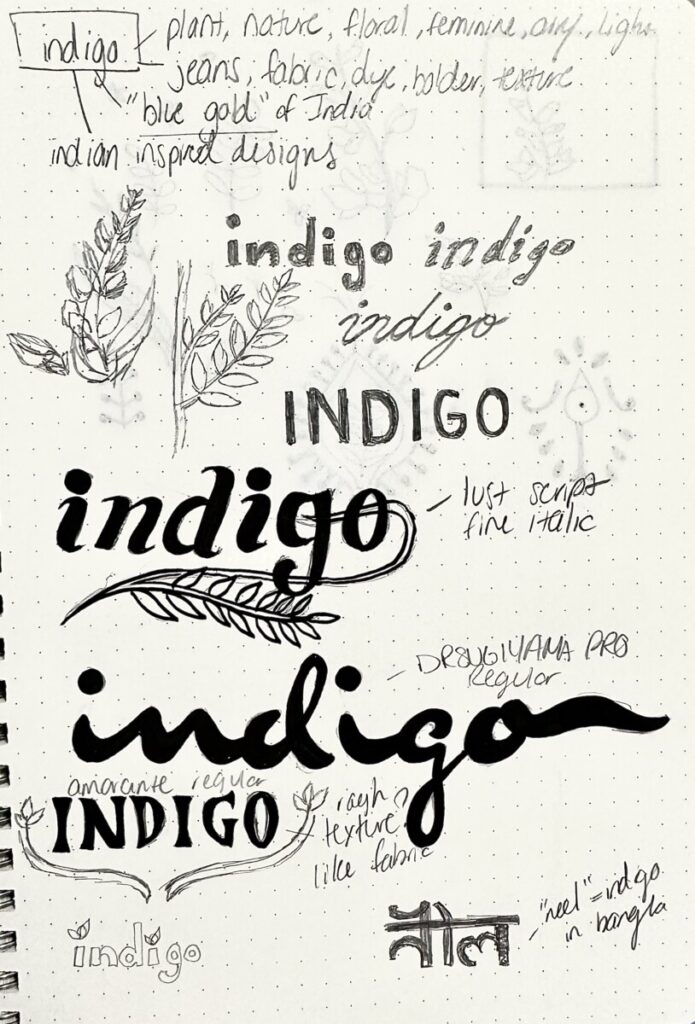
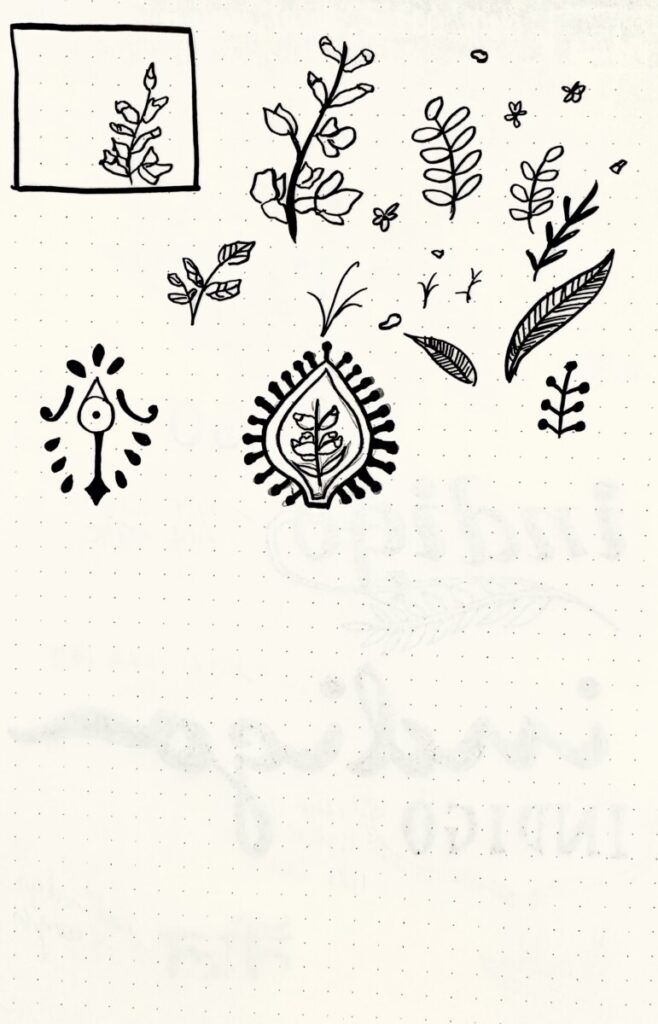
Concept #1
In concept 1, I focused on creating fluid movement through typography and graphic elements. The vine is interwoven through the g and o for a more dynamic piece. The gold plays off the blue well and contrast creates a more visually interesting piece.
The gold and blue were used to signify the “blue gold” and the script typeface gave the composition an airy feminine quality. This piece followed the sketch almost exactly and has good flow. There’s a brightness and liveliness to the piece as well.
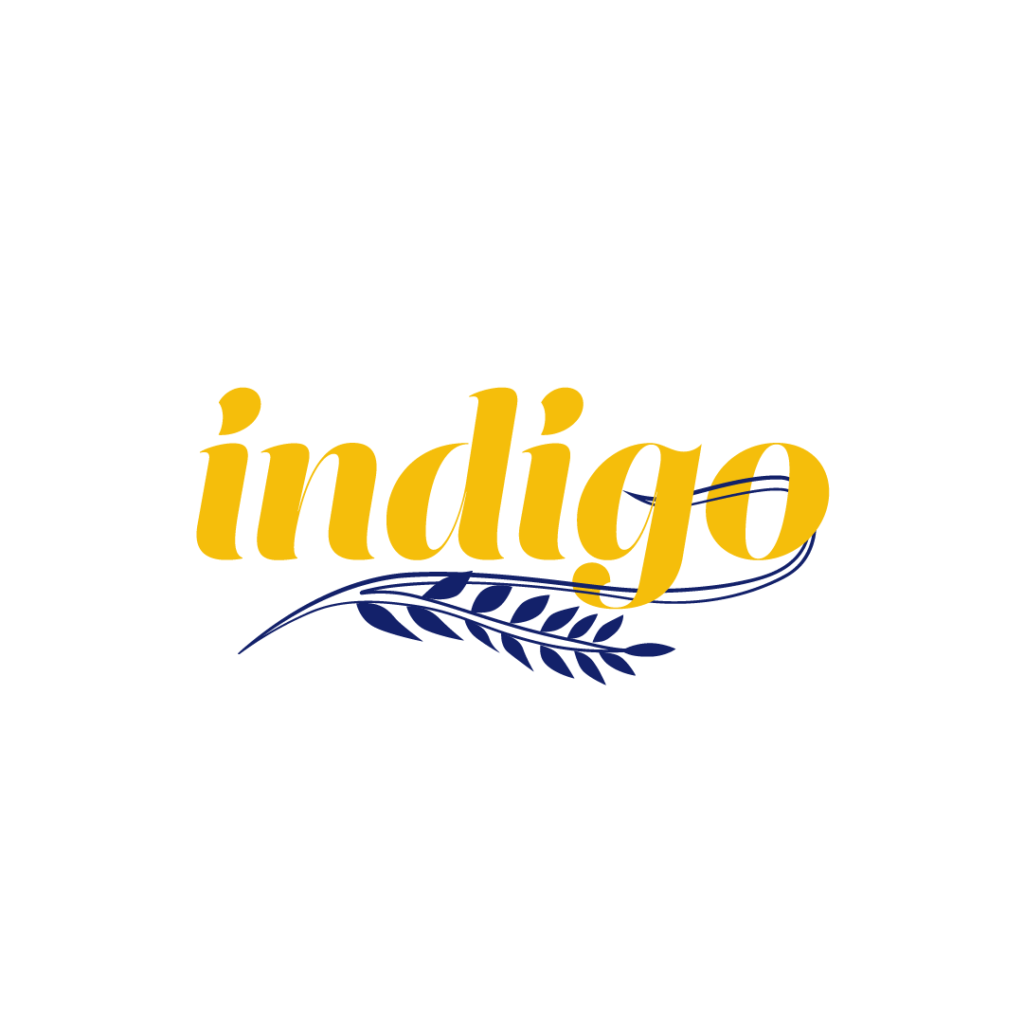
Concept #2
This concept utilizes just the one shade of indigo to showcase it in its truest form. The word for indigo in Bangla is used with a blocky smoothly curved typeface which harmonizes well with the bold script of the English word. The intersecting segments of the two typefaces is cut off to play with figure ground and to add visual interest.
The alignment is especially important in this piece to create a unified look as well as similarly shaped typefaces. The edges of the English word nestle in perfectly with the top bar of the Bangla word.
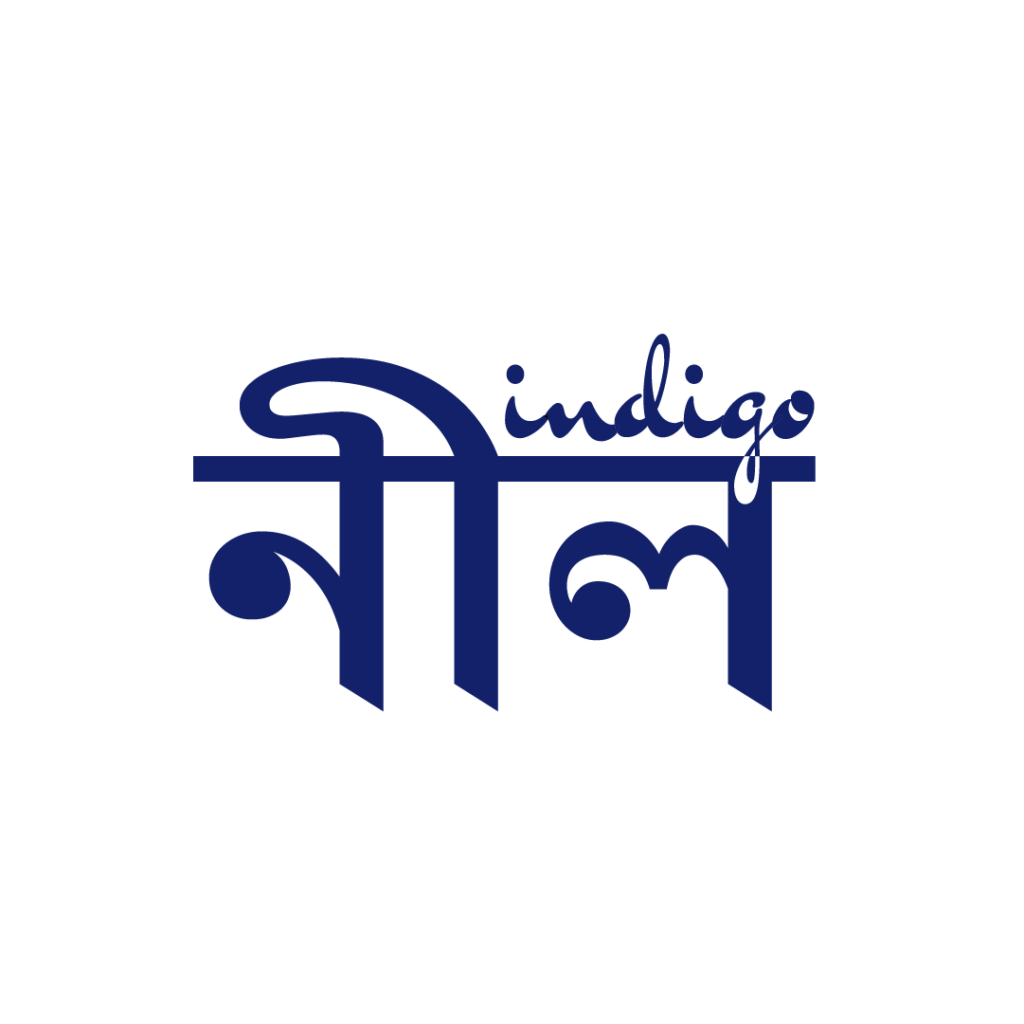
This piece uses the original Bangla word for indigo “neel”.
Concept #3
This composition is my personal favorite as there are many tiny details in this piece. The graphic showcases the indigo plant in the middle and was sketched on paper then vectorized to create a sketchy hand drawn look. The pattern draws inspiration from the textile fabric patterns on traditional Indian women’s garments where embroidery and beadwork is plentiful.
The typeface is accented with swashes to show organic flow as well as a leaf element added to the end of the word. The i is replaced with little flowers again to go back to natural elements and the Bangla word is written below in an outline to soften it.
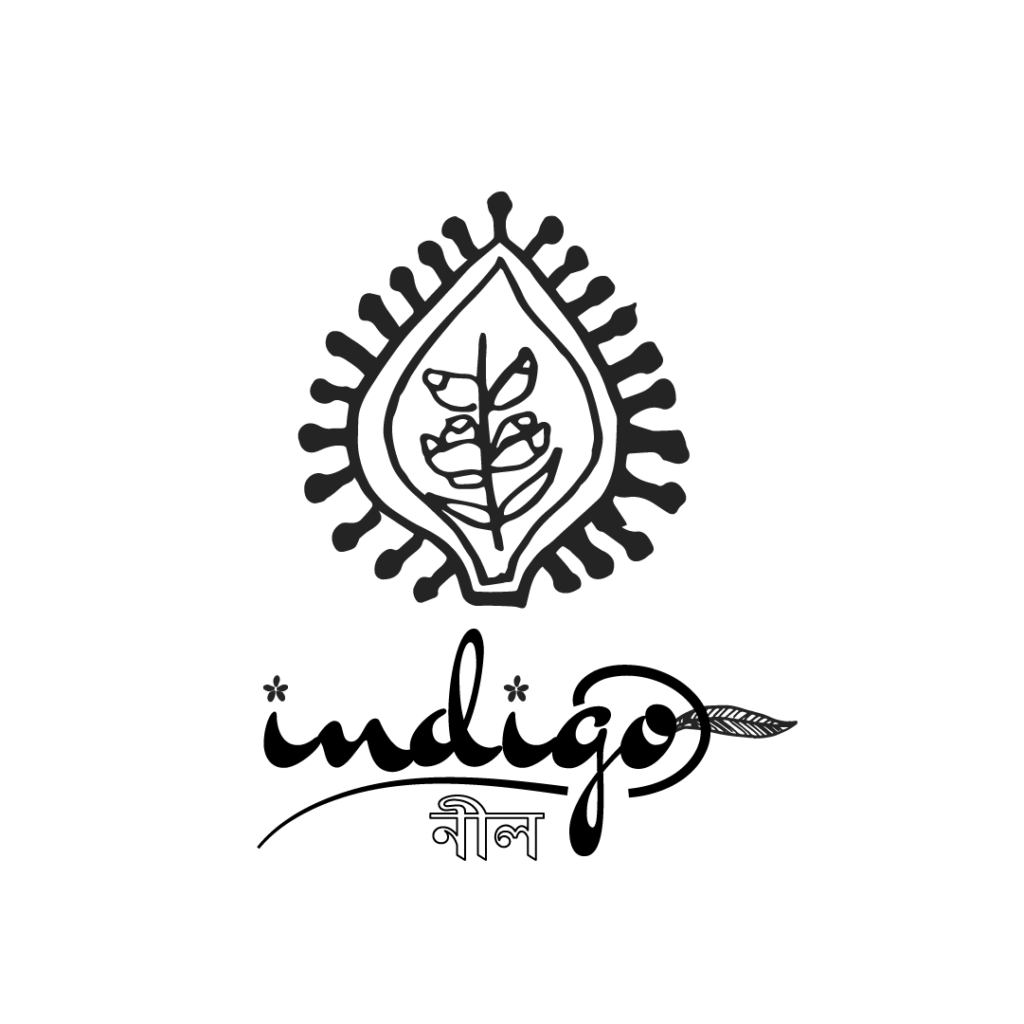
Concept #4
The final concept follows the same style as the previous, playing heavily off mehndi/henna designs. Indigo is also used to dye hair like henna and so I wanted to create a dip dye effect with the mandala design. It is hand drawn once more for an organic fluid look.
The typeface is heavily influenced by Bangla and Hindi lettering and therefore flows well with the mandala design. Tighter corners and geometric edges are used here instead but it harmonizes with the pattern.
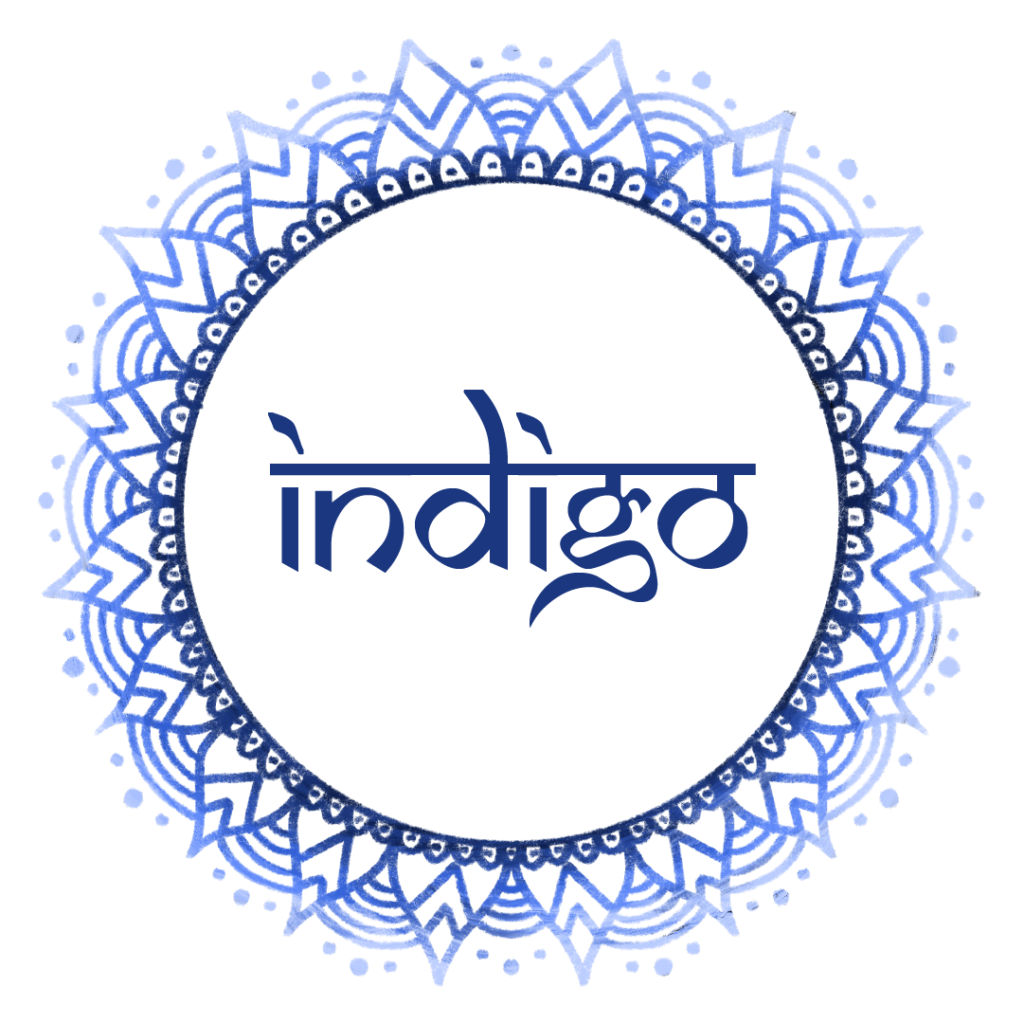
Bonus Pattern

Inspired by Indian traditional textile and dressmaking patterns
References
Bojer, Thomas Stege. “The History of Indigo Dyeing and How It Changed the World.” Medium, Medium, 9 June 2017, https://medium.com/@tsbojer/the-history-of-indigo-dyeing-and-how-it-changed-the-world-35c8bc66f0e9.
Gilon, Catherine. “Indigo: The Story of India’s ‘Blue Gold’.” History | Al Jazeera, Al Jazeera, 13 Dec. 2020, https://www.aljazeera.com/features/2020/12/13/indigo-and-the-story-of-indias-blue-gold.
